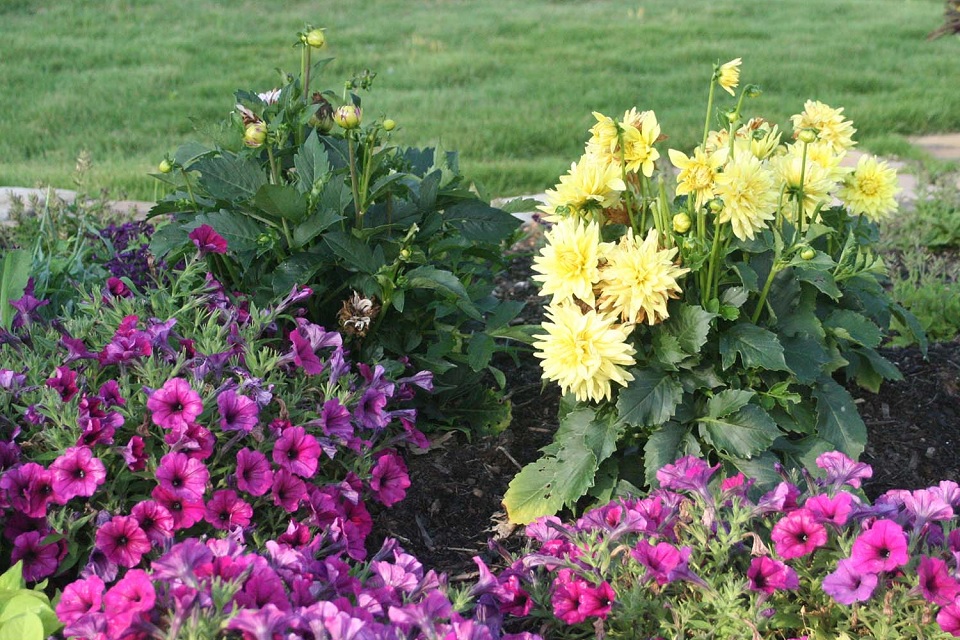
Submitted by Beth Willis, UT Gardens Membership/Volunteer Coordinator
Dahlias offer gardeners a seemingly infinite array of possibilities. They are available in many different sizes, bloom types, foliage colors and bloom colors – even multicolor combinations. All will provide a spectacular display of blooms from midsummer through fall. Whether your main interest is a beautiful garden, or you are interested in bringing that beauty indoors in a cut flower arrangement, there are numerous dahlias to choose from. Best of all, they are easy to grow when you keep just a few things in mind.
Shorter varieties of dahlias, ranging from 1-3 feet, look great used as a border or planted in mass in the garden. Try planting them near complementary foliage plants such as coleus or colocasia for an effective combination. These varieties can also be used in containers for a showy display. Larger dahlias, which can reach 4-6 feet, are perfect for small groupings or as a standalone specimen in the garden.
Dahlias are tuberous tender perennials, meaning they grow from a fleshy thickened root that resembles a carrot. Above zone 8, gardeners should typically dig up the tubers in the fall after the plant has died back and store them through the winter in a cool dry location. In milder areas the tubers can be left in the ground with a thick layer of mulch to help protect them. Whether saved or new, tubers should be planted in late spring, after all danger of frost has passed and the ground has warmed.
Dahlias will perform best in full sun and in a rich, well-drained soil. All but the smallest varieties will benefit from being staked as the blooms can be quite heavy and can pull the stems down. Especially for large varieties, consider a site that offers some wind protection. Tender new growth can sometimes be a target for slugs, but dahlias don’t usually have many issues with pests. In the warmer parts of Tennessee dahlias will do best with some afternoon shade, and smaller flowering types will perform better that the larger forms. Also, in the heat of the summer flower production is slowed but will pick back up when the weather cools.
Native to Mexico, dahlias have been in cultivation for many years, and thousands of hybrids have been developed. There are currently twelve official categories of dahlias, based on the size of the plant and the form of the blooms. Current trends are toward developing shorter plants that retain all the “flower power” of the larger varieties. Explore the American Dahlia Society website at www.dahlia.org for more information about this fascinating plant.
Don’t let the dizzying number of varieties stop you from trying this easy-to-grow garden favorite. Pick one or two that you think you might like and give it a try!
The University of Tennessee Gardens located in Knoxville, Crossville and Jackson are part of the UT Institute of Agriculture. Designated as the official botanical garden for the State of Tennessee, the gardens’ mission is to foster appreciation, education and stewardship of plants through garden displays, educational programs and research trials. The gardens are open during all seasons and free to the public except during designated special events. For more information see utgardens.tennessee.edu.
Contact:
Patricia McDaniels, UTIA Marketing and Communications, 615-835-4570